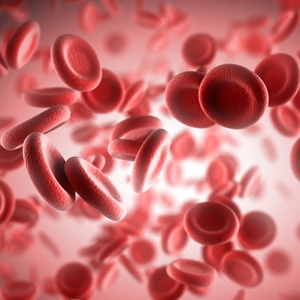
The ability to heal after suffering injuries is among the most incredible and valuable capacities of living beings, though inorganic substances have been left without this capability by nature. However, recent revolutions in chemical engineering research and development have enabled inanimate materials to emulate the regenerative powers of organisms.
For instance, scientists at the University of Illinois have created novel, blood-like compounds that are able to restore themselvesafter incurring damage, according to a news release. These substances surpass the limitations of previous materials, which were only able to mend miniscule fractures.
The new self-healing inorganic mixture can permeate major holes as well as minor cracks in broken items. This expansion of the substances range of application opens up unprecedented possibilities for repairing diverse objects, from consumer products such as automobile bumpers to aerospace equipment.
"For the first time, weve shown that you can regenerate lost material in a structural polymer," remarked Scott White, professor at UI, in the press document. "Thats the kicker here. Prior to this work, if you cut off a piece of material, its gone. Now weve shown that the material can actually regrow."
Heightened healing powers
The UI scientists explained how they achieved significant improvements in the self-regenerating capacity of inorganic compounds in an abstract of their research published in "Science." The enhanced substance includes a vascular structure that allows it to emulate the function of organic systems.
Two-phase polymer chemistry allows for the creation of an adaptive gel that takes on the form of the space that it is placed in, subsequently turning into a solid material that exhibits strong mechanical attributes. This gooey substance can respond to significant structural compromises and renew an items functional capacities.
"We have to battle a lot of extrinsic factors for regeneration, including gravity," White, asserted in the UI materials. "The reactive liquids we use form a gel fairly quickly, so that as its released it starts to harden immediately. If it didnt, the liquids would just pour out of the damaged area and youd essentially bleed out. Because it forms a gel, it supports and retains the fluids. Since its not a structural material yet, we can continue the regrowth process by pumping more fluid into the hole."
The team was able to return mechanical operability to materials within a 3 hour period using the self-healing gel in spaces larger than 35 millimeters, according to the abstract.
"Vascular delivery lets us deliver a large volume of healing agents - which, in turn, enables restoration of large damage zones," said Nancy Sottos, professor of materials science and engineering at UI, in the release. "The vascular approach also enables multiple restorations if the material is damaged more than once."
Taking a page from the book of life
The secret to the enhanced restoration potential of the new material stems from its inclusion of structures typically found in living creatures, namely vascular arrangements such as blood vessels. The UI researchers improved upon prior studies in the creation of similar substances by devising bio-inspired filaments designed to break down in a specific fashion, enabling the establishment of lifelike capillary systems.
"We have demonstrated repair of a nonliving, synthetic materials system in a way that is reminiscent of repair-by-regrowth as seen in some living systems," commented Jeffry Moore, professor of chemistry at UI, in the news document.
The vascular structures may be combined with additional engineering information to yield a commercially available product that can regenerate itself in response to incurred damage in a manner similar to the natural healing processes of living things. Moreover, the timeframe for the capillary release of the restorative chemicals can be adjusted to respond to different kinds of destruction.
The above story is based on materials by Knovel.
Read more: http://why.knovel.com/all-engineering-news/3293-plastic-blood-helps-inorganic-materials-heal-themselves.html
Note: Materials may be edited for content and length. For further information, please contact the source cited above,
 Attachment:
Attachment:
Copyright © 2024 International Society of Bionic Engineering All Rights Reserved
吉ICP备11002416号-1









